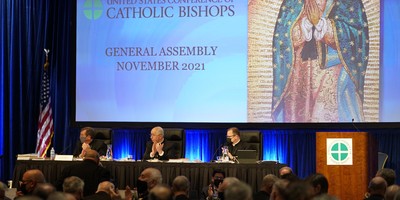The Green New Deal (GND) often is described as “socialist.” This may be because two of its best known advocates, Senator Bernie Sanders and Representative Alexandria Ocasio-Cortez, are avowed democratic socialists. A study of the GND program, however, shows that it is more accurate to classify it as a sort of domestic fascism.
Fascism was popular in the years between World War I and World War II. The exemplar was Benito Mussolini’s Italy. Mussolini was internationally admired and his tenets widely copied. Fascist and quasi-fascist governments took power in many countries, including Germany, Portugal, Romania, Argentina, and Spain.
Two important documents outline the GND. The first is a congressional resolution introduced by Ocasio-Cortez and endorsed by a considerable contingent in Congress. The second is an FAQ sheet dated February 7, 2019, and formerly available on Ocasio-Cortez’s congressional website.
The documents show that the GND program is not solely, nor even principally, an environmental manifesto. It calls for, in the words of the FAQ sheet, “a massive transformation of our society.” Key elements of the program parallel fascism as preached and practiced between the world wars. Here are some examples:
First: Fascists recognize no limits to central government power. The GND sponsors seem to agree. They seek central government control over many aspects of life: health care, employment, housing, finance, manufacturing and other industry, agriculture and other land use. Not even private homes would be safe: Every home in America is to be “upgraded” to meet a range of criteria, including “affordability, comfort, and durability.”
Recommended
Second: Not all fascists are aggressive expansionists, but they think in military terms and seek to organize society along military lines. The GND documents are loaded with militaristic language. American society as organized in World War II is held up repeatedly as a model. The congressional resolution uses the word “war” twice and “mobilization” eight times. The FAQ sheet repeats “war” six times and “mobilize” or “mobilization” six times.
Third: Fascism does not require government ownership of the entire economy, but generally does feature some socialism. Under the GND, the government would obtain ownership interests in private companies, create government owned banks, and encourage “community ownership” of enterprises.
Fourth: Fascism is highly centralized, and the GND is to be managed from Washington, D.C. The GND documents show no awareness that our Constitution grants the federal government only limited powers and reserves the rest to the states and people. In fact, neither document mentions the states at all.
Fifth: Traditional fascism is built around corporatism. This term is unrelated to business corporations; rather, it is the organization of society into guilds or interest groups that allegedly cooperate for the greater good. The GND documents are strongly corporatist: They call for much more labor unionization and for extensive “collaborative” activity among interest groups and “communities.”
Sixth: As in fascism, the GND treats people as groups rather than as individuals. As fascists commonly do, it singles out some groups (“frontline and vulnerable communities”) for favorable treatment. For example, under the GND indigenous people obtain a veto power over government regulations that other groups lack. Additionally, regulations must avoid harming favored groups, but others receive no comparable protection.
Seventh: Under fascism, the leaders’ quirky ideas often become enforceable law. A widely-publicized example from the GND is its prospective ban on air travel. Although some GND advocates have denied their plan would ban air travel, the documents’ wording contradicts them. Another idiosyncratic idea pops up in the FAQ sheet’s crude reference to banning gaseous cows.
Eighth: Fascists are often secular evangelists with a passion for exporting their ideology. The GND resolution prescribes that the United States is to become an “international leader . . . to help other countries achieve a Green New Deal.” The FAQ sheet speaks of bringing about “a global Green New Deal.”
Those are some similarities. Are there differences?
Primarily one: Fascist manifestos generally call for dictatorship or oligarchical rule and the GND does not explicitly do so. But it would grant almost unlimited power to administrative agencies, and it professedly would duplicate how society was organized during World War II. The result almost certainly would be in a stronger version of the de facto executive rule prevailing then.
History does not repeat itself, but does rhyme. It is sad that so many brave Americans who struggled to rid the world of fascism should live to see it re-emerge at home.

























Join the conversation as a VIP Member